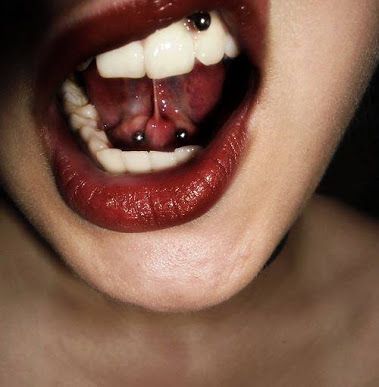Choosing tongue piercings are always fun, especially because there is such a wide range that you can choose from. Not only are they ultra-cool, but they’re also a great way to modify your body. Depending on your preference, you can choose from different sorts of piercings that suit your likings.
We understand that choosing the right tongue piercing might be difficult, which is why we have come up with a guide that can properly inform you. Not only will this help you out when choosing a tongue piercing but it will better inform you of everything you need to know.
Types of tongue piercings
As we have mentioned, there are a few different piercings that you can get. To further explain each piercing, we have broken it down into a few categories:
Snake eyes piercing
This specific piercing appears more vicious because it looks like snake eyes.
It’s located at the front of the tongue and looks like two separate piercings, however, it’s actually one piercing. There are two studs that are horizontally linked together to replicate the “snake eyes”. This is inserted right at the tip of the tongue and is considered as a surface piercing.
While snake eye piercings do look viciously cool they also come with a few risks that you need to be aware of. These risks need to be looked at before considering getting this piercing.
- There is a possibility that you might hit your teeth with the piecing more often than not. This usually will occur with any movement of the mouth, like when talking or eating. It should be noted that this might cause chipped teeth.
- Another risk of this piercing is that you might slur when talking. This is mainly because the tongue is unable to properly maneuver while talking, leading to poor speech and pronunciation. Typically, two muscles are pinned together which is the cause of this issue.
- Gum irritation and gum erosion can also occur.
Midline tongue piercings
Midline piercings are one of the more common types of tongue piercings. It is located in the mid-area of the tongue and positioned about 0.75in away from the tip of the tongue. Many people who choose this piercing use a straight barbell.
Frenulum linguae piercing
This specific type of piercing is located under the tongue but is considered as a tongue piercing. To find the area of this piercing lift your tongue until it touches your palette and you will notice some skin under. This is exactly where the piercing is inserted.
Not everyone can get this piercing unless they have tough skin in this area. If the skin isn’t tough enough it will not be able to hold the piercing properly. This piercing is also not easily visible, making it more discreet and easy to hide.
Vertical/ horizontal tongue piercings
This type of piercing is placed either vertically or horizontally, depending on what you choose. It’s similar to a snake eye piercing but only the location is more in the mid-section of the tongue. A barbell is pierced into the tongue and two studs are placed at the ends.
Although this can look good, there is a big risk of getting this specific piercing. This area of the tongue is more sensitive because there are nerves that can easily be damaged. If these nerves or a blood vessel is mistakenly pierced it can lead to unwanted complications.
Side tongue piercing
This is a pretty unique piercing and is located in the middle of the tongue, either on the left or right section. Side tongue piercings are quite similar to middle tongue piercings.
Aftercare of tongue piercings

After you have decided and gotten your new tongue piercing you will need to look after it.
Here are a few aftercare tips that need to be done once you have your new piercing.
- Talk some salt and warm water and mix until combined. Take a q-tip and dip it in the mixture to clean the area around the piercing.
- Gargle with an antibacterial mouthwash daily.
- Make certain that there is no food that gets stuck in the piercing; this can lead to a buildup of germs and even an infection.
- Gently brush the pierced area when you’re brushing your teeth.
- Always wash your hands before putting fingers in your mouth.

